Ah, the beach vacation—the perfect blend of sun, sand, and surf. But wait! Before you lay out your towel and dive into that new novel, you should know that some unexpected creatures might just throw a wrench in your relaxation plans. While everyone knows about jellyfish and pesky seagulls, there’s a whole host of other critters ready to pounce on your peaceful beach day. From tiny insects to sneaky sea creatures, these unexpected guests can turn a dream getaway into a sandy nightmare. Here’s a list of 12 creatures that might just ruin your next beach vacation.
1. Sneaky Sandflies Ready to Bite

Ah, sandflies. These tiny insects might look harmless, but don’t be fooled by their small size. Found in beachy areas all over the world, these little nuisances can pack a big punch. Their bites are often more irritating and long-lasting than mosquito bites, causing itchy welts that can drive you up the wall for days. According to the CDC, sandfly bites can also transmit diseases such as leishmaniasis, which you definitely don’t want as a vacation souvenir. So next time you’re lounging on the sand, keep an eye out for these sneaky pests. Consider using insect repellent and covering up to avoid their irritating bites.
Sandflies usually come out during dusk and dawn, so plan your beach time accordingly. They thrive in warm, moist environments, so beaches near mangroves or marshes are prime territory for them. If you get bitten, resist the urge to scratch, as this can lead to infection and further irritation. Instead, clean the affected area and apply an anti-itch lotion to soothe your skin. Remember, while sandflies might be tiny, their impact on your vacation can be huge. A little preparation can help keep their annoyance at bay.
2. Persistent Pigeons Poised to Pilfer

You might think pigeons are mainly city dwellers, but these adaptable birds are more than happy to join you at the beach. And they’re not shy about making themselves at home. They’re known for swooping down to snatch your snacks, sometimes straight from your hands! It might seem amusing at first, but these feathered freeloaders can become a real nuisance if they decide to target you and your picnic. Be careful—pigeons can carry diseases that could put a damper on your vacation fun. According to the National Wildlife Health Center, these birds can harbor over 60 different diseases, making close encounters less than ideal.
To avoid becoming a pigeon target, keep your food well-covered and avoid feeding them, as tempting as it may be. Pigeons are notorious for remembering where food is readily available, so feeding them only encourages more unwanted attention. If you’re particularly unlucky, you might even attract an entire flock! If they become too bothersome, consider moving to a less populated part of the beach. Remember, pigeons are persistent, so vigilance is key. With the right precautions, you can enjoy your picnic in peace.
3. Crafty Crabs Crawling Underfoot
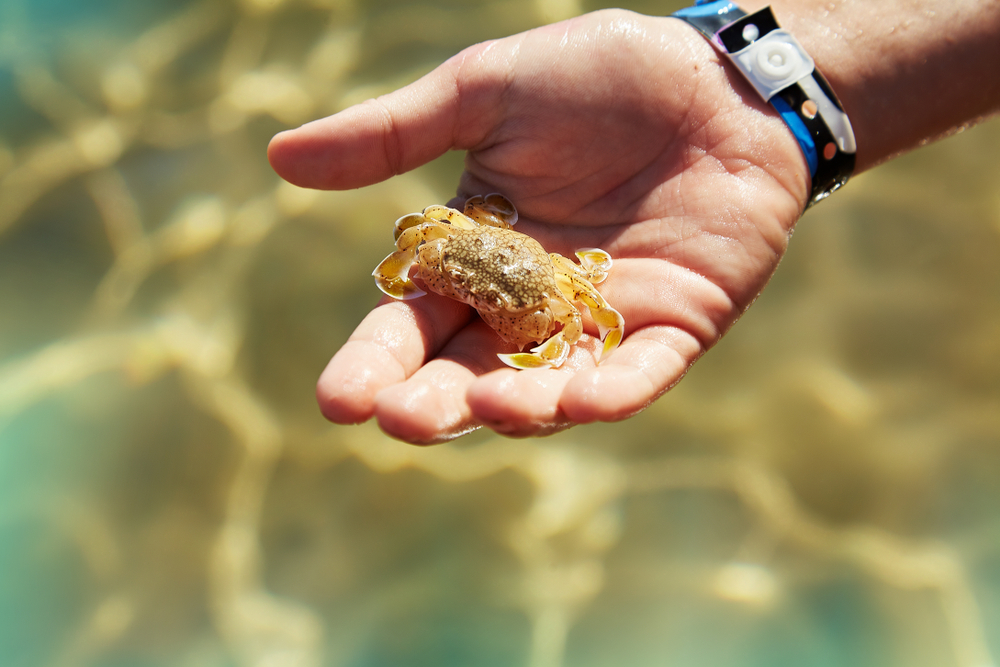
Crabs might seem like amusing beachside companions, scuttling across the sand, but they can also be a source of unexpected trouble. While most crabs are harmless, stepping on one can result in a painful pinch that you won’t soon forget. Some species, like the ghost crab, are incredibly well-camouflaged, making them difficult to spot until it’s too late. Always watch your step, especially near dunes or rocky areas where crabs like to hang out.
If you’re looking to avoid an unwanted crab encounter, consider wearing sandals or water shoes while walking along the beach. This simple precaution can help protect your feet from an unexpected pinch. If you’re one of those beachgoers who enjoys digging in the sand, be cautious, as crabs often hide just below the surface. And if you do happen to get pinched, clean the area with water and keep an eye out for signs of infection. Though crabs might be fascinating to observe, giving them a respectable distance will ensure your vacation remains pinch-free.
4. Cunning Coquina Clams Causing Chaos
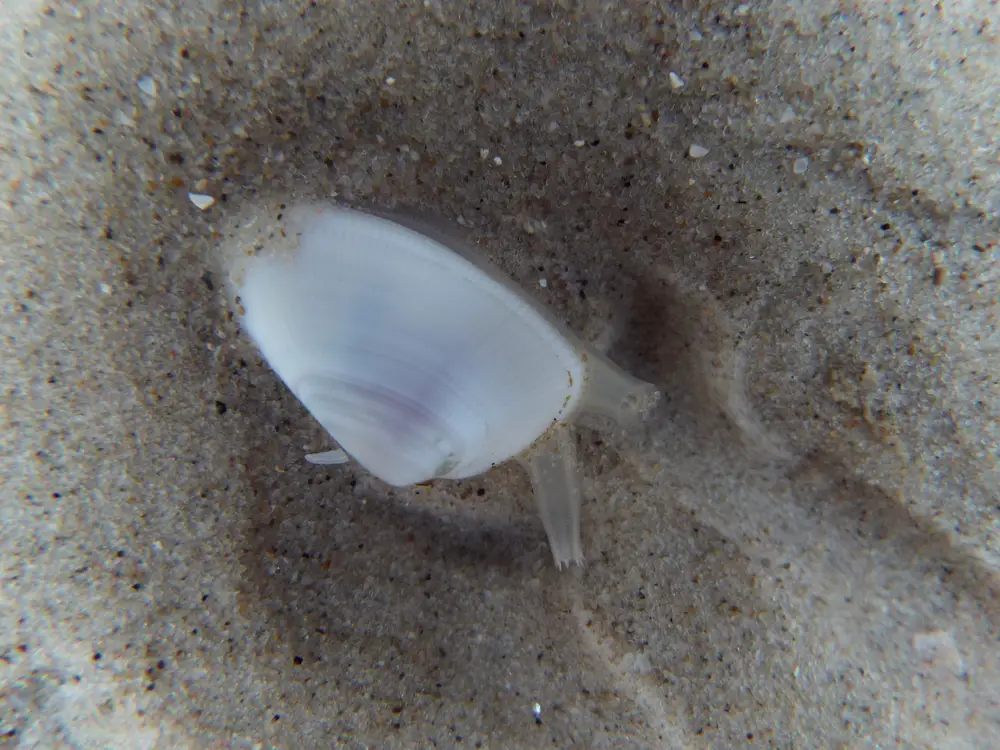
Coquina clams might be small, but they can surprise and disrupt your beach day in unexpected ways. Often found burrowing in the wet sand near the water’s edge, these colorful clams can be charming to watch as they emerge and retreat with the ebb and flow of the tide. However, stepping on them with bare feet can be a startling and uncomfortable experience. The sharp edges of their shells can cause minor cuts or scrapes, which can be particularly unpleasant when mixed with sand and saltwater, leading to irritation or infection.
To avoid any unpleasant surprises, it’s wise to be cautious when walking along the shoreline. Wearing water shoes or sandals can provide protection from their sharp shells. If you have young children, teach them to be careful when playing in the sand, as curious little fingers might end up with a nip from a closing clam. While coquina clams are more of a minor nuisance than a serious threat, they can still disrupt your relaxation if you’re not careful. So, next time you spot those colorful shells in the sand, admire them from a safe distance and keep your feet safe.
5. Ravenous Rays Ready to Sting
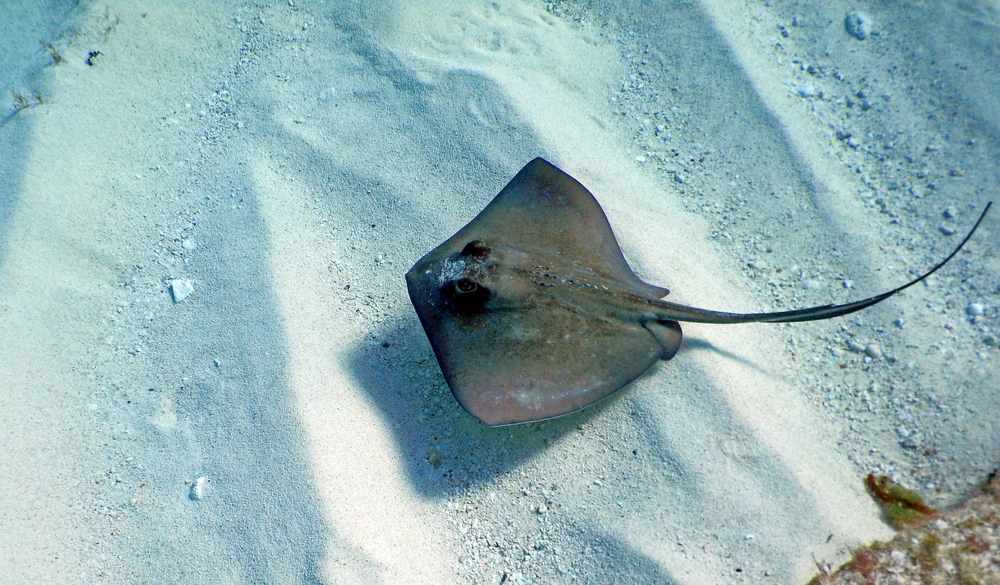
Rays, including stingrays, are graceful yet formidable creatures that can be found gliding through shallow waters near beaches. While they generally aren’t aggressive, they can cause painful injuries if accidentally stepped on. Their natural defense mechanism involves a venomous sting that can lead to intense pain and swelling. To avoid an unpleasant encounter, practice the “stingray shuffle” by shuffling your feet in the sand as you walk in shallow waters, alerting any nearby rays to your presence so they can swim away.
If you do happen to get stung by a ray, seek medical attention promptly. While the sting is often not life-threatening, the pain can be severe and requires proper treatment. Hot water immersion can help alleviate the pain until medical help is available. Additionally, staying informed about recent stingray sightings in the area can help you make safer decisions about where to swim. Rays are beautiful and fascinating marine creatures, but giving them space ensures a harmonious coexistence with these elegant undersea gliders.
6. Menacing Man-O-War Mysteriously Floating
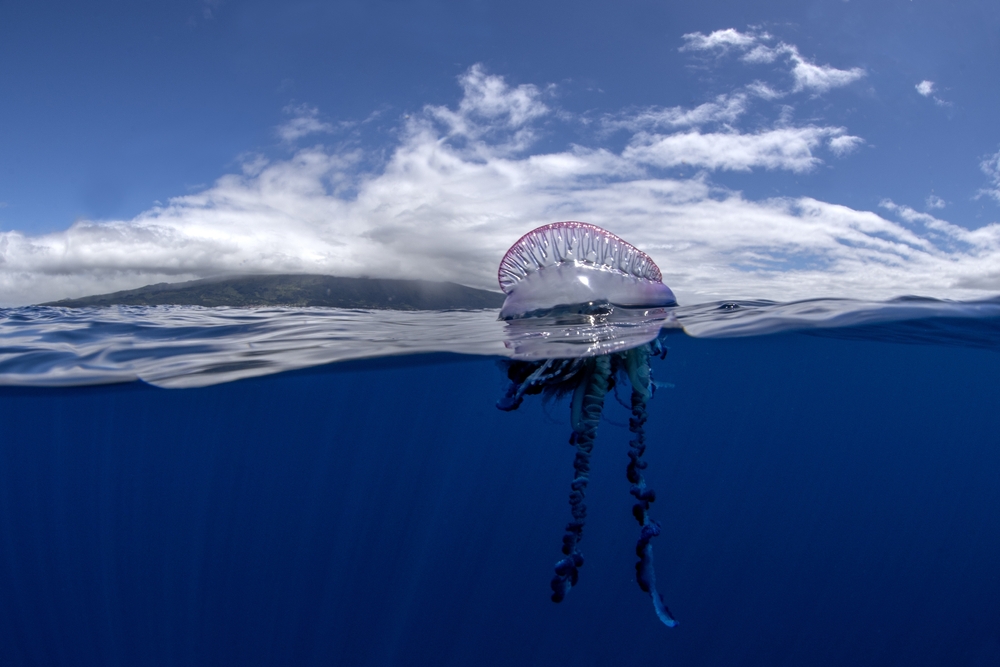
While technically not a jellyfish, the Portuguese Man-O-War is a marine siphonophore that can deliver a sting even more painful than its jellyfish cousins. These creatures float on the ocean’s surface, their long tentacles trailing beneath, and can be difficult to spot from afar. Their sting can cause intense pain, blistering, and in severe cases, can lead to systemic reactions that require immediate medical attention. Avoid touching them, even if washed up on shore, as their tentacles can still sting long after death.
If you’re visiting a beach known for Man-O-War sightings, take precautions by staying informed about any warnings or advisories in place. Lifeguards and local signs are often good sources of information on recent sightings. If you encounter one in the water, calmly swim away without splashing to avoid attracting its tentacles. In the unfortunate event of a sting, rinse the area with vinegar to neutralize the venom and seek medical assistance. Being aware of their presence and knowing how to respond can help you enjoy your beach day without the fear of an unexpected sting.
7. Unseen Urchins Underfoot
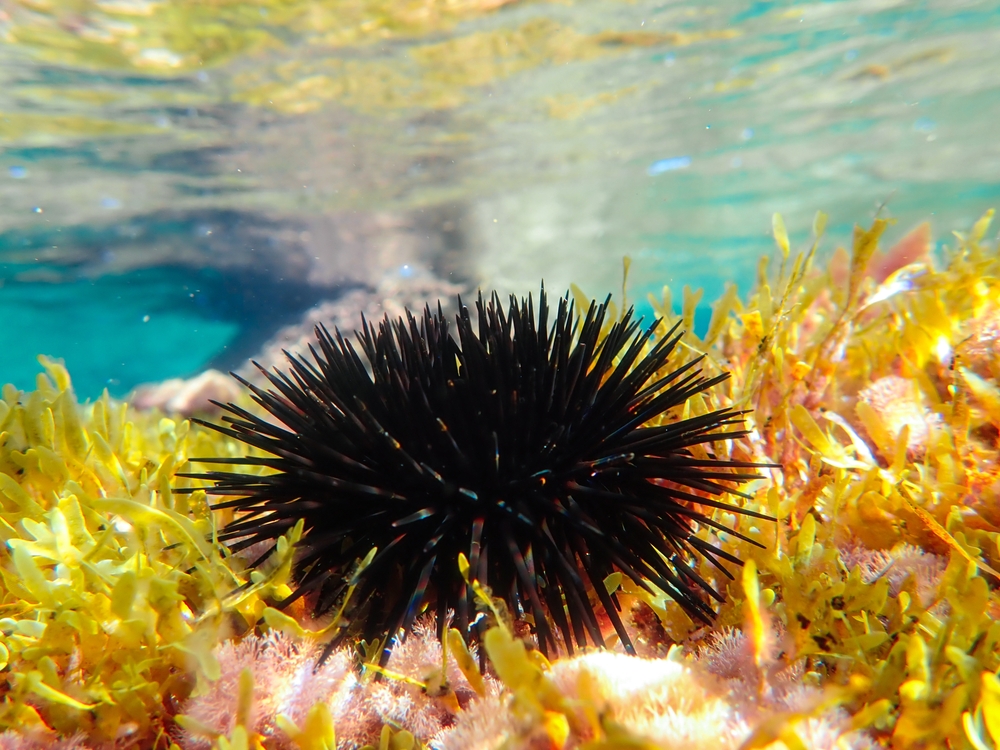
Sea urchins are spiny marine creatures that often reside in rocky beach areas or coral reefs. While they aren’t aggressive, stepping on one can be a painful experience due to their sharp, brittle spines that can embed themselves in your skin. The injury not only hurts but can also lead to infections if not treated properly. To avoid this painful encounter, be cautious when exploring tide pools or rocky shorelines, and consider wearing water shoes for added protection.
If you do step on an urchin, it’s important to carefully remove any spines embedded in the skin. Soaking the affected area in hot water can help ease pain and dissolve the spines. Seek medical attention if spines are deeply embedded or if you experience severe pain or signs of infection. While sea urchins contribute to the ocean’s biodiversity, a little caution can ensure they don’t interrupt your beach enjoyment. Respect their presence and tread carefully to avoid an unexpected and painful encounter.
8. Lurking Lice Living in the Sea

Sea lice, also known as seabather’s eruption, are microscopic larvae of jellyfish that can cause itchy skin rashes when trapped between your skin and swimsuit. These pesky parasites are more prevalent in warm waters and tend to be more active during certain times of the year. While the rash they cause is usually not serious, it can be incredibly uncomfortable and irritating, sometimes lasting for days. Preventing sea lice involves being aware of local advisories and avoiding the water during peak times.
If you end up with a sea lice rash, resist the urge to scratch, and instead rinse off with fresh water and change out of your swimsuit as soon as possible. Applying anti-itch creams or taking antihistamines can help alleviate discomfort. In severe cases, consult a healthcare provider for appropriate treatment. While these tiny pests can be bothersome, a bit of preparation and swift action can save your skin from unnecessary irritation. Enjoy the beach with peace of mind by staying informed and ready for potential encounters with sea lice.
9. Tantalizing Turtles Tucking in the Sand
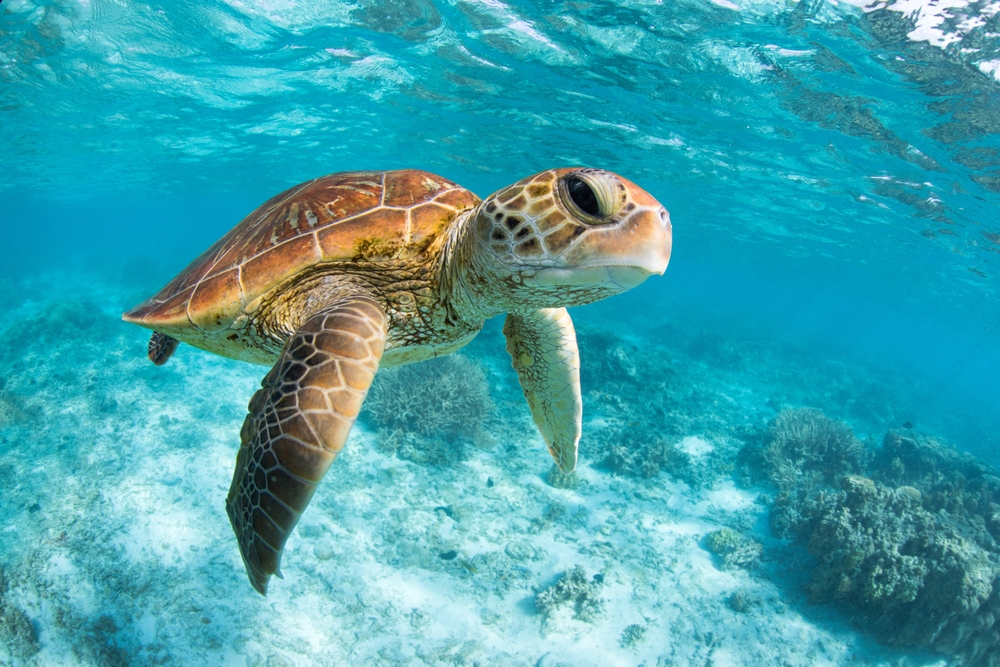
Sea turtles are beloved icons of marine life, often drawing tourists eager to witness their nesting rituals. However, nesting season can bring unexpected challenges to beachgoers as certain areas become restricted to protect these endangered creatures. It’s crucial to respect these regulations to avoid disturbing nests or hatchlings, which are vital for the species’ survival. Additionally, turtles sometimes mistake garbage for food, leading to unfortunate encounters that can harm both the turtles and the beach environment.
To ensure a harmonious visit, be mindful of marked nesting areas and keep a respectful distance from turtles you might encounter on the beach. Clean up after yourself and dispose of trash properly to prevent accidental ingestion by turtles. If you’re lucky enough to witness a hatchling emergence, follow local guidelines to avoid interfering with their natural journey to the sea. By respecting these ancient mariners and their habitats, you can enjoy a beach vacation that supports conservation efforts and ensures a future for these amazing creatures.
10. Mischievous Monkeys Making Mayhem
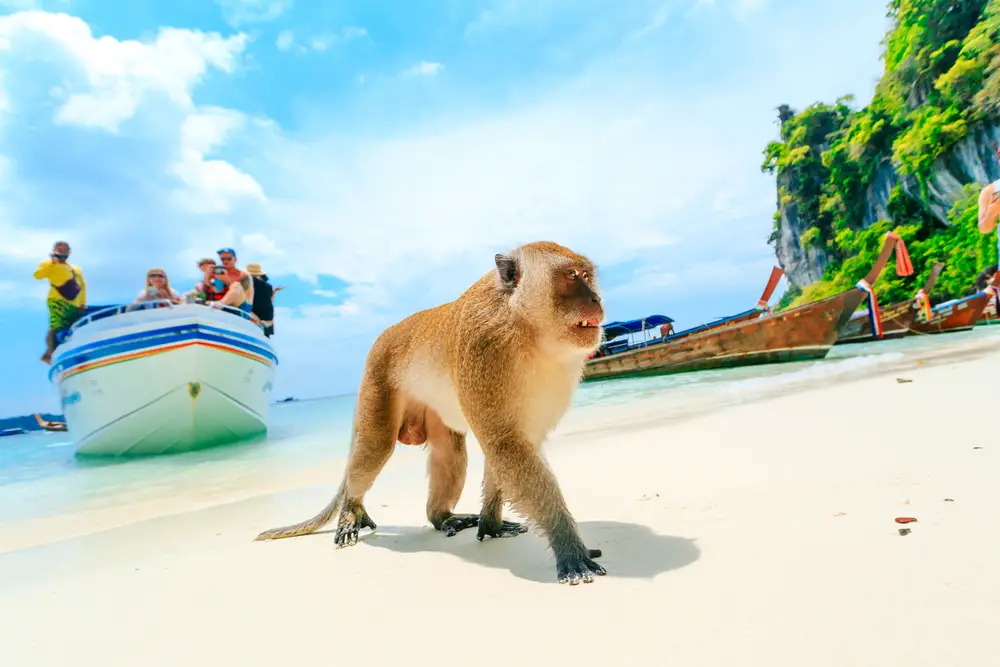
While monkeys aren’t common beach dwellers everywhere, in certain tropical regions, these curious critters are well-known for their cheeky antics. They’re notorious for rummaging through bags, stealing snacks, and even pilfering shiny objects like sunglasses or cameras. While their mischief might be amusing from a distance, close encounters can quickly become problematic, especially if monkeys become aggressive over food. Additionally, monkeys can carry diseases, making it essential to minimize direct interaction.
To prevent monkey mayhem, secure your belongings and avoid feeding them, as this encourages their bold behavior. Observe monkeys from a distance and appreciate their antics without encouraging closer encounters. If you find yourself in a situation where monkeys are getting too close for comfort, calmly and slowly move away without panicking or running, which might provoke them. By respecting their space and maintaining a safe distance, you can enjoy watching these fascinating creatures without falling victim to their playful pranks.
11. Camouflaged Cones Hiding a Sting
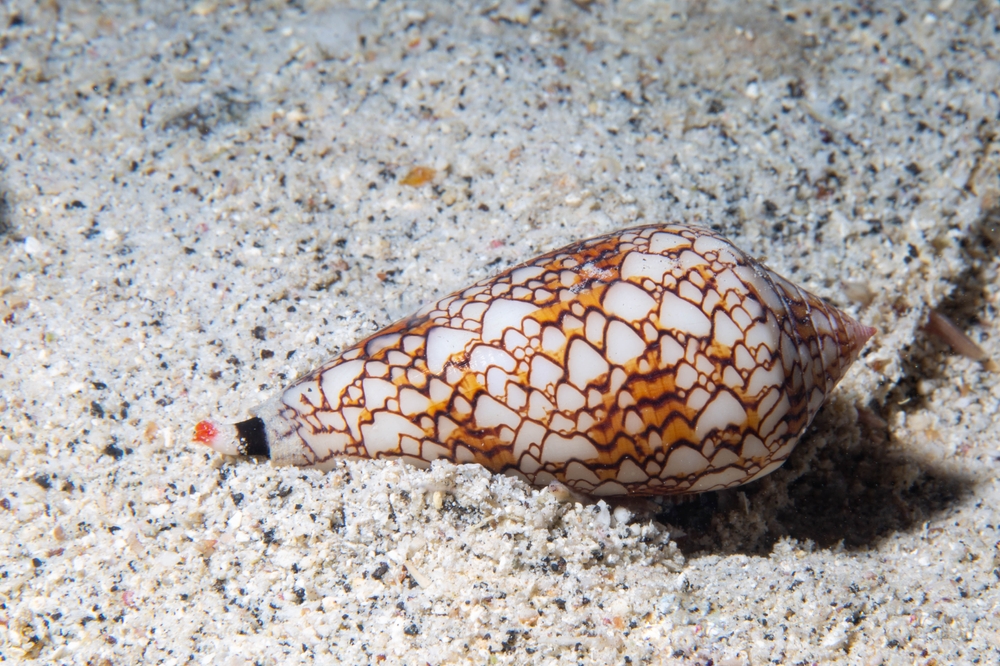
Cone snails are beautiful marine mollusks known for their intricately patterned shells, often sought after by collectors. However, inside these lovely shells lies a potent venom capable of delivering a sting that can be incredibly painful and, in rare cases, life-threatening. These snails tend to hide in sandy or coral reef environments, where they can easily be overlooked by unsuspecting beachgoers. If you’re not careful, picking up a seemingly harmless shell could lead to an unpleasant encounter.
To avoid an unwanted sting, it’s best to admire cone snails from a safe distance and resist the temptation to pick up shells without knowing their inhabitants. If you encounter one while snorkeling or diving, give it plenty of space and do not attempt to handle it. Should a sting occur, seek immediate medical attention, as cone snail venom can cause severe reactions. These snails remind us that beauty can sometimes hide danger, so exercise caution while exploring marine environments.
12. Territorial Terns Taking Flight
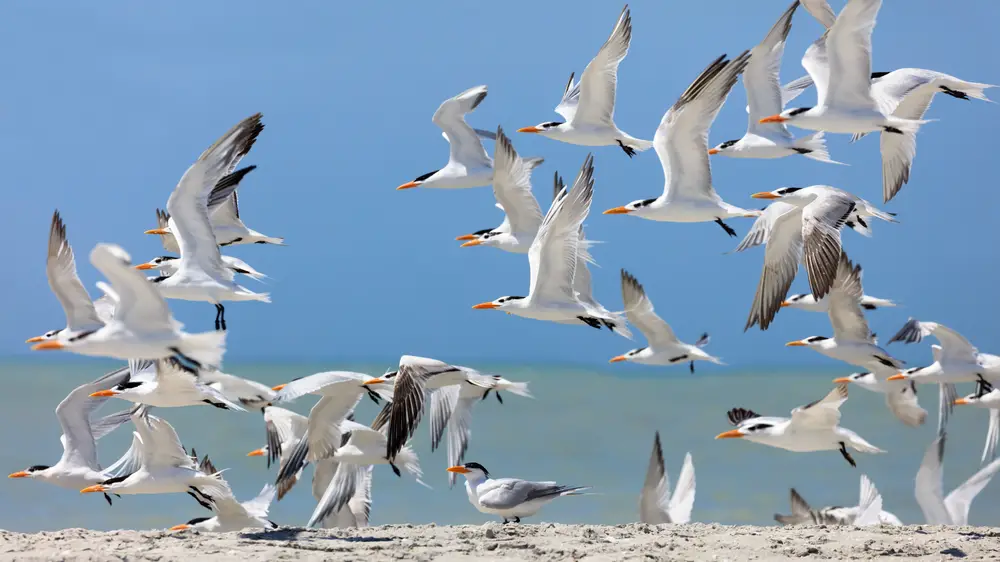
Terns are elegant seabirds often spotted diving for fish along beaches, but during nesting season, these birds can become quite territorial. If you inadvertently wander too close to a tern’s nest, you might find yourself the target of an aerial assault as they swoop to protect their young. While their pecking is unlikely to cause serious injury, it can certainly be startling and disrupt a peaceful beach day. Respecting nesting areas is crucial to avoiding these unexpected attacks.
When visiting beaches known for tern nesting, keep an eye out for signs or barriers indicating protected areas, and observe these boundaries diligently. If you find yourself in an area where terns are nesting, back away slowly and avoid sudden movements that might provoke the birds. By giving these protective parents the space they need, you can appreciate their beauty without falling victim to their defensive dives. A little awareness goes a long way in ensuring a harmonious coexistence with these spirited seabirds.
